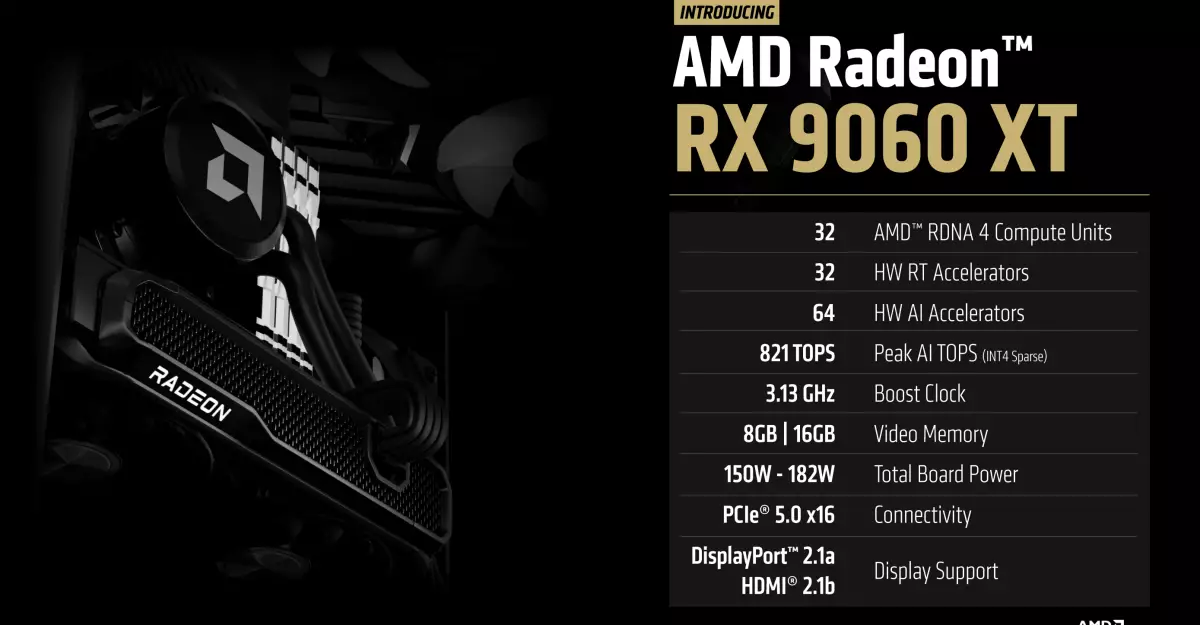The recent announcement at Computex about AMD’s latest RDNA 4 GPU—the Radeon RX 9060 XT—has left the tech community buzzing with intrigue and speculation. However, what stands out is not just the announcement itself, but the absence of crucial details such as pricing and a release date. In a market that thrives on competition, particularly against Nvidia’s recently launched RTX 5060, AMD’s silence raises eyebrows. This maneuver can be seen as a strategic gamble on AMD’s part, possibly prompting consumers and reviewers to hold off on decisions while waiting for more information. This approach can either lead to a build-up of anticipation or frustration, depending on how AMD chooses to navigate this critical juncture.
8GB VRAM Dilemma: A Double-Edged Sword
At the heart of the RX 9060 XT’s specifications lies the contentious choice of 8GB vs. 16GB VRAM options. As the gaming industry evolves, with titles increasingly demanding in their memory requirements, the 8GB cap has sparked heated discussions among enthusiasts and critics alike. AMD appears to be walking a fine line by mirroring Nvidia’s decision to offer a modern GPU that seems to underestimate the needs of today’s gamers. This decision raises a significant question: Is AMD willing to risk its reputation by aligning itself with Nvidia’s controversial choices? The focus will inevitably shift to how the RX 9060 XT performs in real-world conditions, especially compared to Nvidia’s model.
Technical Achievements: What the RX 9060 XT Brings to the Table
On a technical level, the Radeon RX 9060 XT boasts an impressive lineup of features. With 32 RDNA 4 compute units and a remarkable boost clock speed of 3.13GHz, AMD aims to showcase a powerful performance that could potentially challenge Nvidia’s offerings. Support for DisplayPort 2.1a and HDMI 2.1b only enhances its appeal, especially for gamers seeking high refresh rates and resolutions. Yet, these attributes come with a total board power that ranges between 150 to 182 watts—figures that, while respectable, further invite scrutiny regarding efficiency and performance under load. Such specifications compel enthusiasts to consider whether AMD has struck the right balance between power consumption and performance.
The Broader Market Context: A Tumultuous Landscape for Gaming GPUs
Against the backdrop of this GPU showdown is an increasingly tumultuous competitive landscape. Nvidia’s hesitation in releasing reviews for the RTX 5060 has bred skepticism and anger in the community, with accusations of manipulating narratives swirling around the GPU maker. Nvidia’s notorious decision to push for Multi Frame Generation (MFG) discussion in its benchmarks adds fuel to the fire, raising concerns about transparency and fairness in the gaming industry. This situation places both AMD and Nvidia under the microscope, where every decision and spec is not merely a technical aspect but a reflection of their commitment to gamer satisfaction and fair play.
In this high-stakes environment, AMD’s RX 9060 XT announcement serves as both a response to Nvidia’s maneuvers and a potential catalyst for change in industry standards. The choices made by these two titans of technology may redefine expectations for performance, pricing, and what it truly means to cater to the modern gamer. As industry players jostle for relevance in a rapidly evolving market, one thing remains clear: innovation and consumer trust will ultimately dictate their success.


Leave a Reply